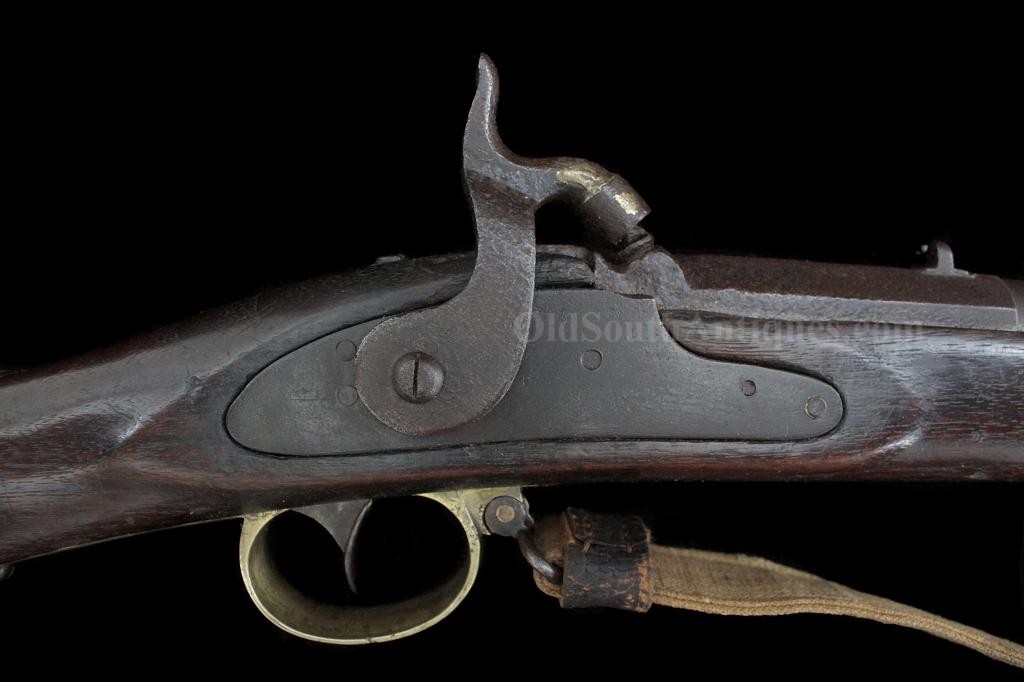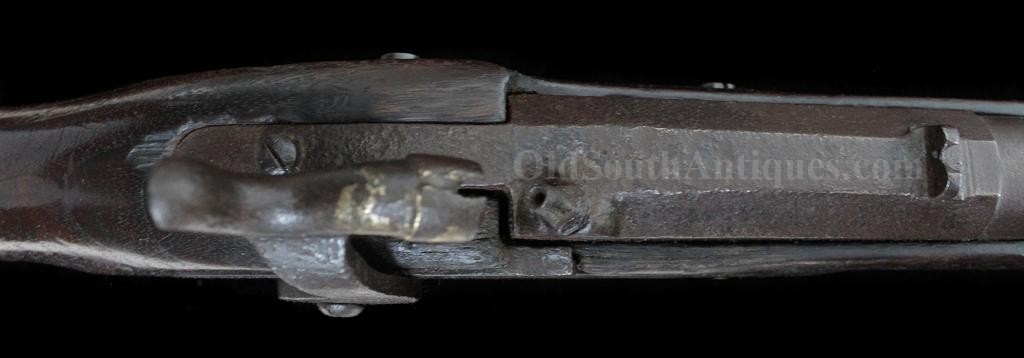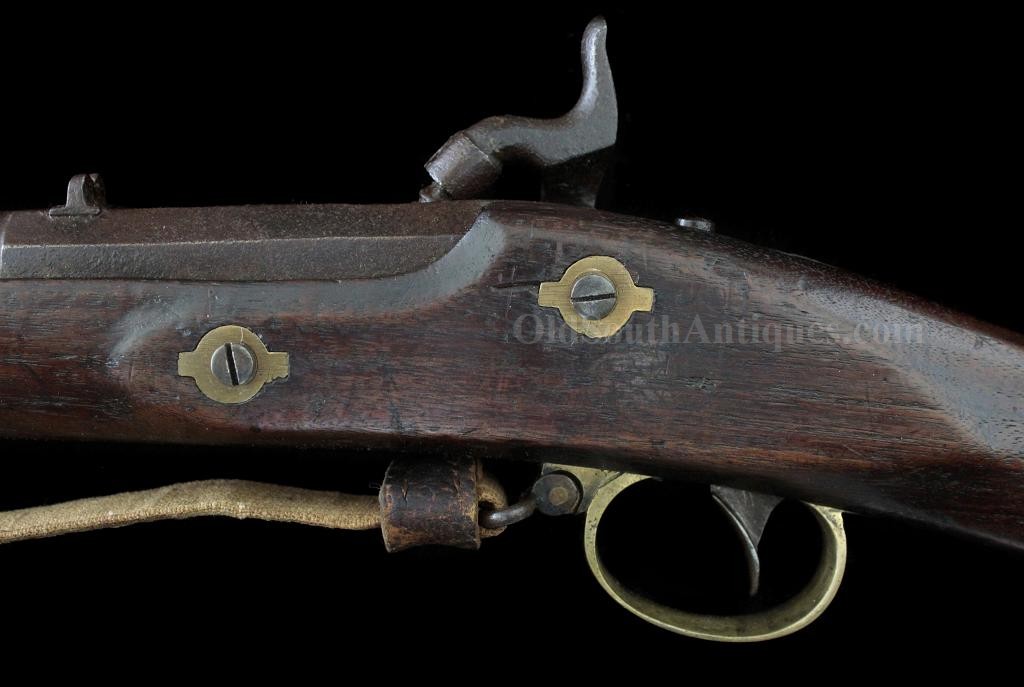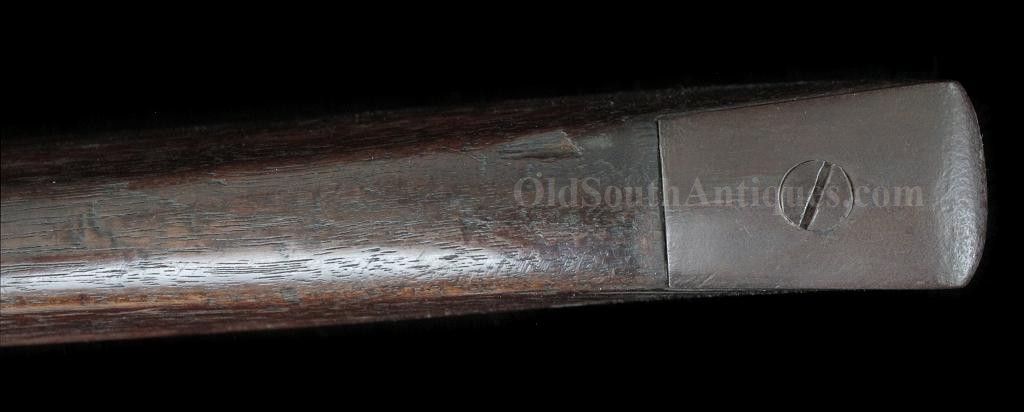
| Catalog | Past Items | Order Info | Terms/Conditions | About Us | Inventory Clearance |
North Carolina had a thriving gun industry prior to the War Between the States, and the Old North State’s Ordnance Department was quick in harnessing the talents of these men to outfit her soldiers. After first having all the old and obsolete arms in the arsenals converted to percussion and put into shape for battle, the state let out contracts to make arms on the Mississippi rifle pattern, without being sticklers for exact copies. The various North Carolina makers, Gilliam & Miller, Mendenhall, Gardner & Jones, Searcy & Moore, Henry C. Lamb, M.A. Baker, Clapp, Huffman & Co., Clapp, Gates & Co. and the Florence Armory each produced their own version of the rifle; all were generally similar, so similar that before they were done it was difficult to tell who made what. Ideally each made their own weapons lock stock and barrel, and each turned out some rifles of their own complete manufacture.
The rifle made by Clapp, Gates & company at the Cedar Hill Foundry, eleven miles east of Greensboro, North Carolina is one of the rarest of Confederate rifles. Prior to the War, the foundry, owned by Clapp, Huffman & Company made farm machinery and iron and brass castings for a variety of manufacturers. In 1861, the firm rented part of the foundry to the rime of Mendenhall, Jones & Company, where they produced rifles for North Carolina and the Confederacy.
Seeing that farm work would not pay, the Clapp family (Huffman) and Charles C. Gates, in February or March, 1862, contracted with the State of North Carolina to make 2,500 rifles under the name of Clapp, Huffman & Company, the same name under which the Cedar Hill Foundry operated.
Like almost all Confederate gun makers, they
ran into so much difficulty that very few of their contract were actually made
and accepted. Only 321 rifles were
delivered under this contract, and only 209 were accepted. One of the problems, (as evidenced in other rifles) was a brittleness of the hammer's tip, causing the rim to chip off. You can see where this one was rejected and repaired at the time.
By 1863 the firm had become Clapp, Gates & Company. The owners were Joshua Clapp, Jacob Clapp, George W. Clapp, Simeon Clapp, and Charles Carol Gates. Under a new contract dated January 1st, 1863, Clapp, Gates & Company were to make 2,350 rifles. However, on August 26th, 1863, the state terminated the contract of which only 690 rifles had been delivered. Subsequently, the firm sold 75 more rifles to the state. The firm was also casting parts for the Tarpley Carbine, H.C. Lamb, Mendenhall and Jones & Gardner.
The original rifles were made in .50 caliber, deliveries after March 1863, were in the required .577 caliber. This is one of the post March 1863, .577 caliber rifles.
This rifle is published on pages 113 and 114 of Madaus and Murphy’s Confederate Rifles and Muskets and on pages 310 and 311 of William Ivey’s fine work, North Carolina Schools of Longrifles, 1765-1865.
The rifle is as pure and untouched as possible as a 150 year old rifle could be. It looks as though it was well used, but taken care of, and was then put away in a pristine environment for the next 150 years. The wood and metal edges remain sharp and almost unblemished. The rifling is remarkably strong. Its CS linen sling is in excellent condition. It is magnificent! I am not dexterous enough with pen (I know, I know, I am not writing with a pen, but "keyboard” just doesn’t have the same historic flavor) with mere words how special this rifle is; the condition and patina could not possibly be any better. And there are very few CS guns that are rarer.
Flawless!
Copyright © 2025 OldSouthAntiques.com All Rights Reserved.
Privacy Policy | Terms of Use
Powered by Web-Cat Copyright © 1996-2025 GrayCat Systems








